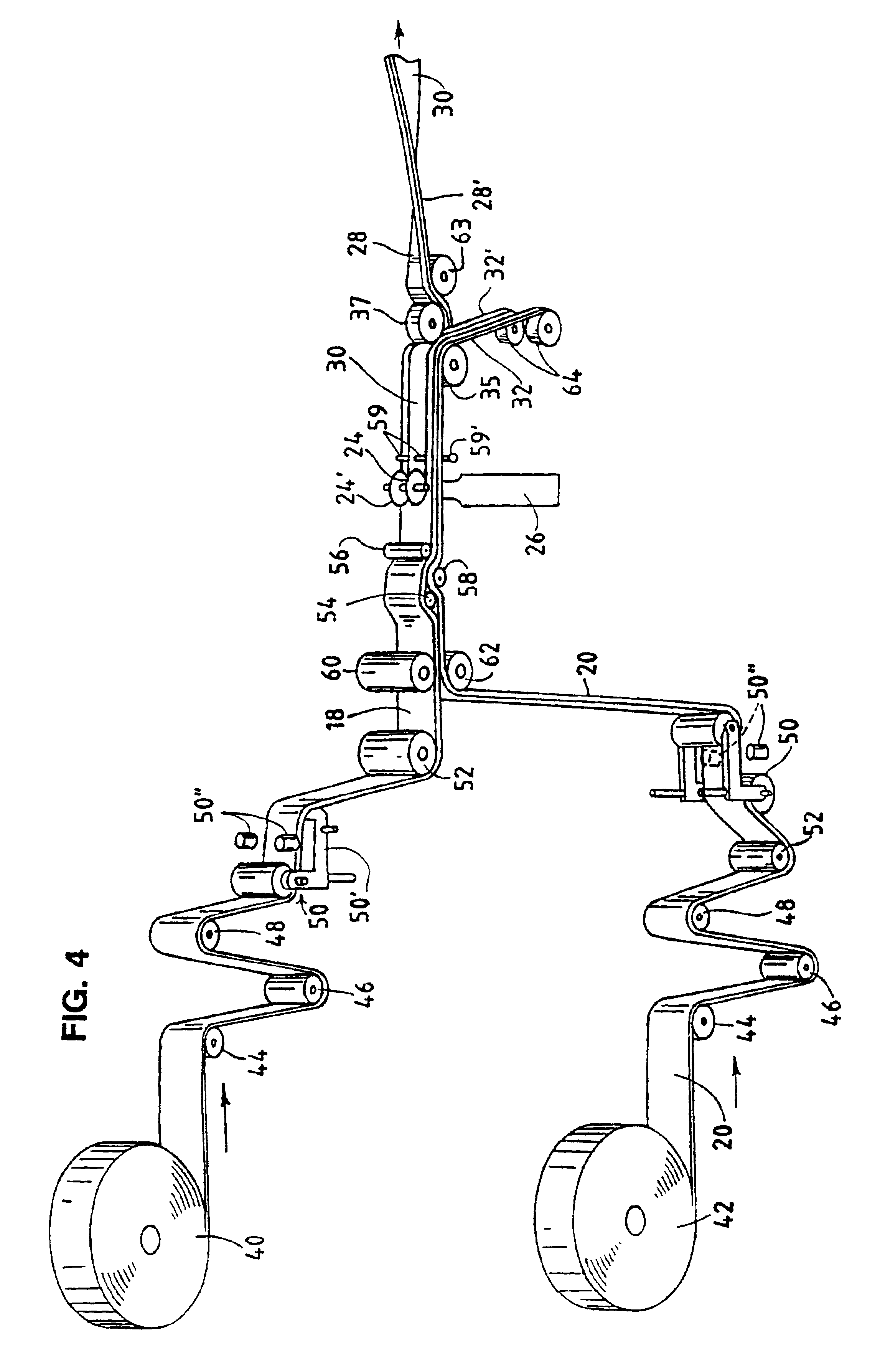Cellular panel and method and apparatus for making the same
a technology of zig-zag-shaped sheets and panels, which is applied in the field of cell-type insulation panels, can solve the problems of less attractive panels for some purchasers, less efficient method for fabricating panels made from zig-zag-shaped sheets, and increased difficulty in controlling
- Summary
- Abstract
- Description
- Claims
- Application Information
AI Technical Summary
Benefits of technology
Problems solved by technology
Method used
Image
Examples
Embodiment Construction
The Embodiment of FIGS. 1-5
[0055]While this invention is susceptible of many different forms, there is shown in the drawings and will herein be described in detail various preferred embodiments of the invention, with the understanding that the present disclosure is to be considered as an exemplification of the broad principles of the invention and is not intended to limit the broad aspects of the invention to the embodiments illustrated. The various different details of the various embodiments of the invention are, in some cases, due to their different applications and, in other cases, due to progressive improvements to earlier developed embodiments.
[0056]Referring now to the drawings, FIG. 1 shows a portion of a non-light controlling closed tube cellular panel 10 in its expanded state, formed from laminated horizontally elongated vertically aligned tubular sections or cells 12. This is the most preferred panel embodiment of the present invention where the panel is not light-control...
PUM
| Property | Measurement | Unit |
|---|---|---|
| Angle | aaaaa | aaaaa |
| Thickness | aaaaa | aaaaa |
| Pressure | aaaaa | aaaaa |
Abstract
Description
Claims
Application Information
 Login to View More
Login to View More - R&D
- Intellectual Property
- Life Sciences
- Materials
- Tech Scout
- Unparalleled Data Quality
- Higher Quality Content
- 60% Fewer Hallucinations
Browse by: Latest US Patents, China's latest patents, Technical Efficacy Thesaurus, Application Domain, Technology Topic, Popular Technical Reports.
© 2025 PatSnap. All rights reserved.Legal|Privacy policy|Modern Slavery Act Transparency Statement|Sitemap|About US| Contact US: help@patsnap.com



